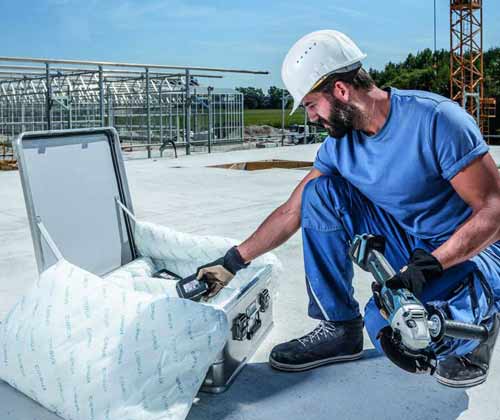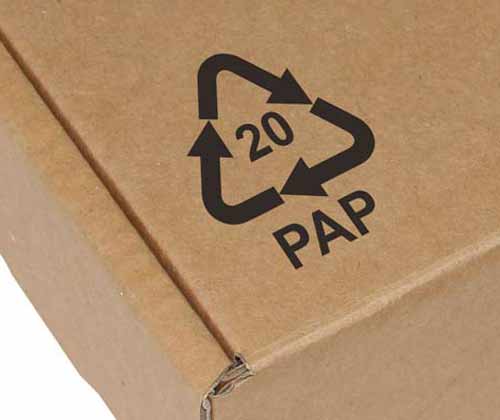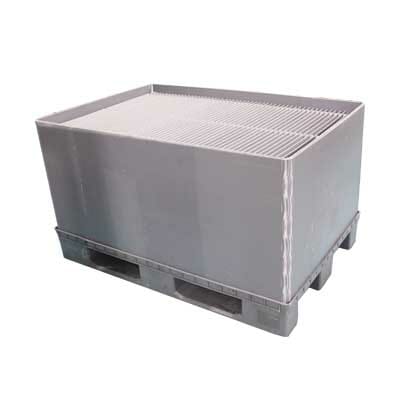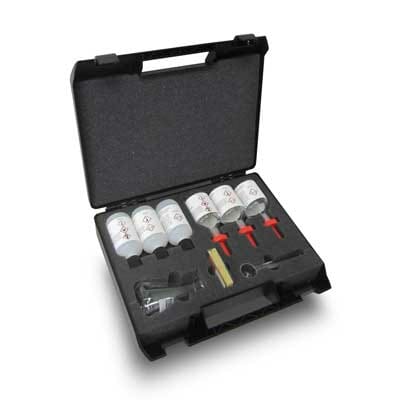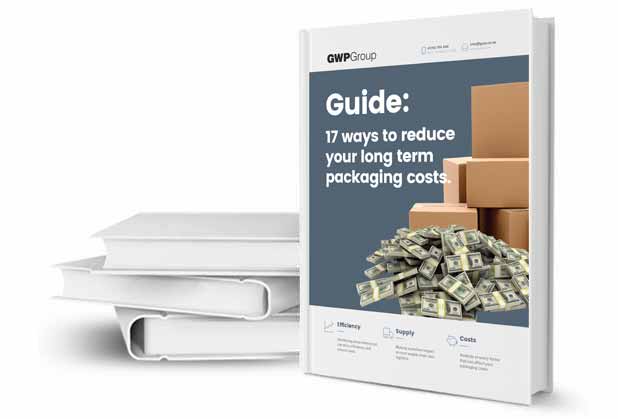Medical device logistics
Industrial transit packaging for the medical sector
If your business produces specialist, large equipment for healthcare providers, you’ve likely faced the challenges of shipping large medical equipment.
Shipping large medical equipment, such as MRI or CT scanners, lasers, or lab equipment, requires specialist medical packaging. Other important considerations include transport providers, ease of loading and unloading, export requirements (such as customs declarations), and environmental factors. Protecting what is typically very expensive equipment designed to save people’s lives is vital.
This how-to guide on shipping large medical equipment covers all this and more, allowing you to determine the most appropriate medical packaging for your specific product or application.

Contents
02: Important considerations
03: Planning
04: Packaging
05: Disassembly
06: Packing and unpacking
07: Environmental considerations
08: Hazardous materials
09: Shipping provider
10: Insurance
11: Export
12: Reusable packaging
13: Summary
Introduction
The challenges of shipping medical equipment
The medical and healthcare industries are among the most challenging in terms of the demands placed on your packaging.
Specialist medical equipment can often be very large, bulky and heavy, making it difficult to move and handle. It can also frequently be delicate or highly calibrated, making it prone to damage during shipping. And it is typically very expensive, meaning that any damage can seriously impact your business.
The combination of being specialist (i.e., not manufactured in particularly large numbers) and expensive also makes sourcing suitable packaging for large medical equipment difficult. Machines such as MRI or CT scanners, lasers, lab equipment, X-ray equipment, and even hospital beds and specialist furniture all pose surprisingly different challenges.
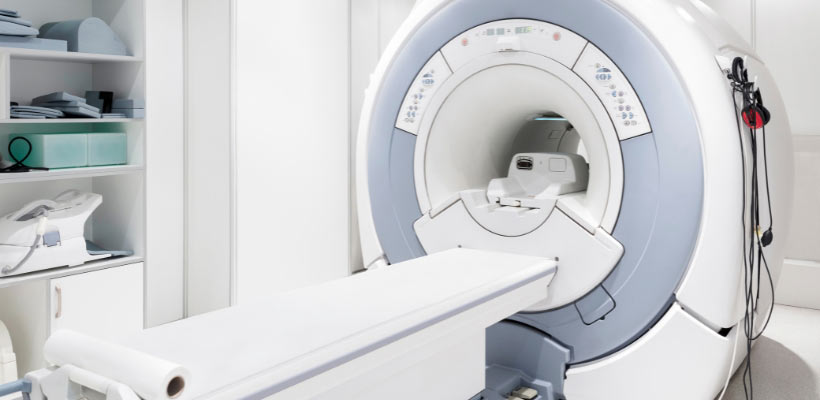
Types of large medical equipment packaging
Unlike handheld medical devices, which commonly use lightweight plastic cases for their packaging, there are several options for larger equipment.
For example, wooden shipping crates are a common choice for oversized medical machines. Heavy-duty corrugated boxes, including triple-wall boxes, are another popular option, while some applications call for larger protective cases (including GRP, roto mould, and flight cases).
However, composite packaging is arguably the most widely used type of large medical equipment container.
Also known as hybrid packaging, composite packs incorporate multiple materials to provide a range of benefits, primarily protection and ease of use. A composite pack can, for example, include a wooden pallet for easy movement by forklifts, a heavy-duty corrugated outer for protection, and foam inserts to cushion your device. You can also choose to include additional features such as printed handling instructions and even integrated ramps for unloading equipment at its destination.
Important considerations
Points to consider when shipping large medical equipment
Even knowing that composite packaging is likely to be the best way to ship your large medical equipment, there are still a large number of considerations that you should not overlook, including:
- Planning ahead.
- Sourcing (and designing) your packaging.
- Whether to send equipment fully assembled or in parts.
- Packing and unpacking processes.
- Environmental considerations.
- Considerations for hazardous materials.
- Finding a suitable shipping provider.
- Insurance and tracking.
- Specific points when exporting.
- The potential for reusable packaging.
Planning
The benefits of planning ahead
It may sound obvious, but failing to plan can cause many problems further down the line.
You must take a comprehensive approach covering the entire process to ensure that you have a robust plan for shipping your specific items.
Of course, there are scenarios where it may not be possible to plan as thoroughly as you would like. For example, the COVID-19 pandemic led to a significantly increased requirement for large ventilators, with the urgency of the situation preventing an in-depth planning process.
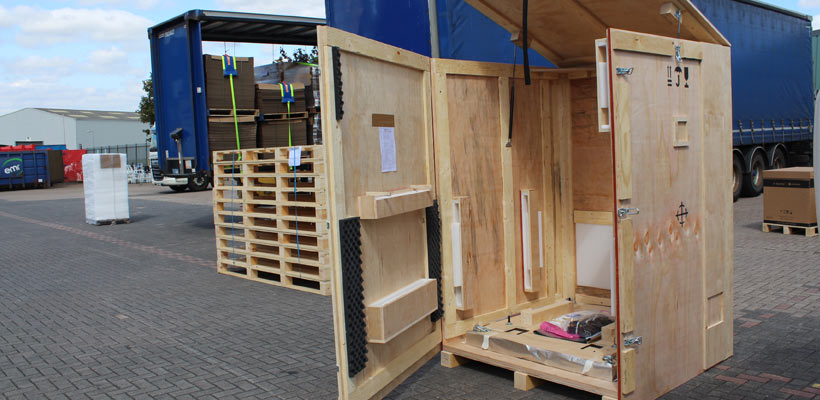
Packaging
Sourcing and designing your packaging
It goes without saying that it is impossible to find off-the-shelf packaging for large medical devices. And even if it were, it would not provide the level of performance required for such specialist equipment.
As such, working with a medical packaging company that can offer a custom design service and understands the challenges you face is vital. As is a packaging manufacturer that can provide all of the required packaging options, including timber, corrugated, foam, and other specialist materials.
Packaging, where the supplier outsources certain elements, especially when creating composite packs, typically provides less protection and performance (and is usually costlier, too).
Of course, the other benefits of custom packaging also apply, including an optimised size that reduces shipping costs, more efficient material use, easier packing and unpacking and even the addition of branding.
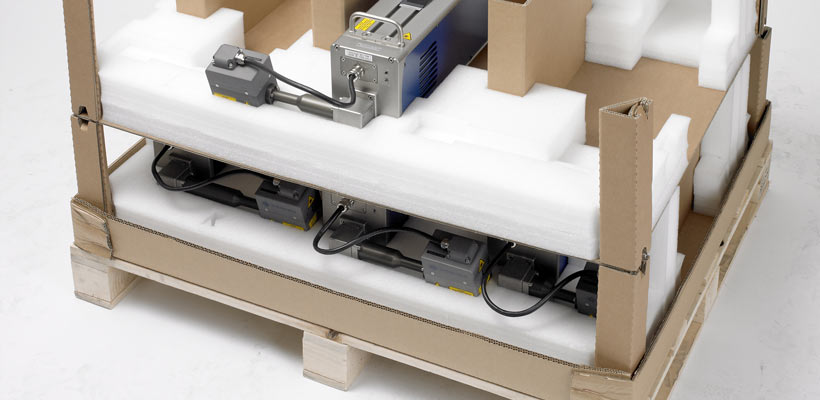
Disassembly
Whether to send fully assembled or in parts
An important question to ask is whether you should ship your large medical equipment fully assembled or in component parts.
Whilst the former makes life easier for the recipient, it can make the packaging requirement much more challenging.
Sending items disassembled does mean extra work for the healthcare facility you are sending the items to or potentially having your team of engineers on-site to assemble the equipment. However, it can allow for the equipment to be shipped in smaller consignments or even just in a reconfigured layout within the existing pack.
However, if you do this, your packaging must ensure that no parts are lost or damaged and that your customers can access parts in the order in which they need them for assembly.
Packing and unpacking
Ease of use for staff and end users
Whether you are shipping your large medical device in one piece or disassembled, you must consider how easily your staff and users can pack/unpack the equipment.
For your staff, due to the equipment size, the pack may need to be assembled around the unit at the end of production.
Conversely, the end user is unlikely to have aids such as winches, forklifts, or other handling equipment. As such, it is vital that you consider how they will get the equipment out of the pack and into position. For example, where equipment is on a pallet, could you include ramps so that the item can be “rolled” off and into position?
In a similar vein, if you are sending single-use packs to customers, it can help to consider how they dispose of the pack after unpacking. For example, do they have facilities to easily dispose of timber cases or pallets, or could corrugated cardboard be used instead?
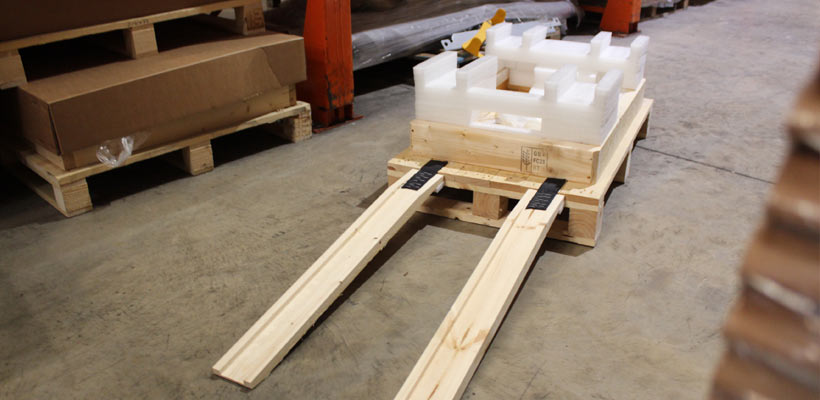
Environmental considerations
Protecting against the elements
Your device or equipment may be prone to damage caused by humidity, condensation, or moisture. Your packaging should protect against all of this, whether through waterproof materials (cardboard can become water-resistant with specialist coatings), VCI properties, or even the inclusion of desiccants.
Similarly, medical devices can be damaged by electrostatic discharge. As such, you may also need to consider suitable conductive packaging materials.
Hazardous materials
Safe transit of controlled products/materials
While it is unlikely that your equipment will be shipped containing or alongside hazardous materials, there are some scenarios where this may occur.
It is also becoming frequently common for devices to use lithium-ion batteries, which are themselves classified as hazardous.
Any packaging you use to send hazardous material must meet specific guidelines (e.g., UN3480 for lithium batteries), and you must also inform your shipping provider.
Shipping provider
Working with an experienced transport service
Beyond your packaging, finding and working with a suitable transport provider is crucial.
There are several businesses that specialise in the shipment of delicate and expensive goods. They will have the experience and knowledge specific to your application to help avoid costly damage during transit.
However, including appropriate handling symbols and instructions on your medical equipment packaging is still helpful, as this can further prevent damage.
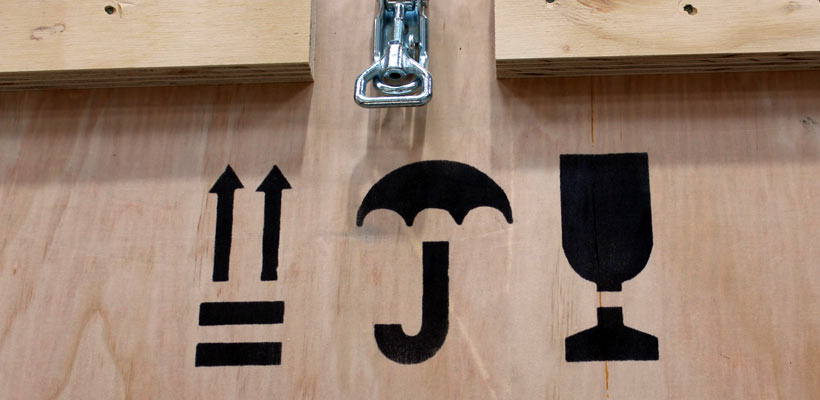
Insurance
Track and insure your shipment
This is another obvious point, but insurance for your products during their journey to your customers is essential. This is particularly true when shipping large medical equipment that is particularly expensive or vital for patients’ health.
Tracking shipments can also be helpful, particularly when shipping a dissembled item in multiple packs/consignments.
Export
Requirements for international shipping
If you ship large medical devices overseas, several considerations are specific to this.
For example, any timber used in your pack must be ISPM 15 certified. You may need to consider the size of the pallets that the countries you are exporting to typically use. You’ll have to think about additional protection for the conditions your packaging may face (most likely as sea freight). And you’ll also need a suitable export packing list.
Making adequate provisions for these points ensures that your shipment is not delayed (or worse) during its journey.

Reusable packaging
Is a returnable pack an option for your business?
If you ship the same item semi-regularly and can cost-effectively have your packs returned, returnable packaging should be a strong consideration.
Not only does reusing a pack over multiple shipments significantly reduce your expenditure (by minimising the cost per trip and lifetime costs), but it also minimises your environmental impact. You’ll use less material, send less to landfills, and use less energy in recycling and remanufacturing processes.
However, returning particularly heavy or large packs can be uneconomical and inefficient if you do not already have vehicles coming back to your sites or are shipping overseas.
Summary
Sourcing packaging for large medical equipment
Why is proper medical equipment shipping crucial? For medical institutions and manufacturers alike, the consequences of damaged or delayed equipment extend beyond financial losses. Patient care can rely on the timely and intact delivery of these assets. Hence, prioritising efficient shipping processes is paramount.
Fortunately, at GWP, we are already well-versed in creating bespoke packaging for individual applications and products for the medical industry. From selecting the right material, technology, and even testing, our designers and packaging experts can provide the guidance you need.
So, if you would like to speak to one of our experts to source packaging for shipping large medical equipment, please do not hesitate to get in touch.
Share this article
Further reading


About the author

Stuart boasts over 20 years of top-level experience as a packaging design engineer, in roles at Insit Moulded Packaging (IMP) and Macfarlane.
Products in this guide
Get in touch
Related guides
Medical device cases – 7 important considerations when sourcing
Accessible packaging: what is it, and why does it matter?
6 essential pallet optimisation tips to maximise efficiency
UK pallet sizes – what are they, and do they affect your packaging?
7 advantages of using wooden export crates (and 5 disadvantages)
What is ISPM 15? A comprehensive guide
Export packaging guide – 7 considerations for international shipping
Shipping cases: 5 options for safe transit of your goods















